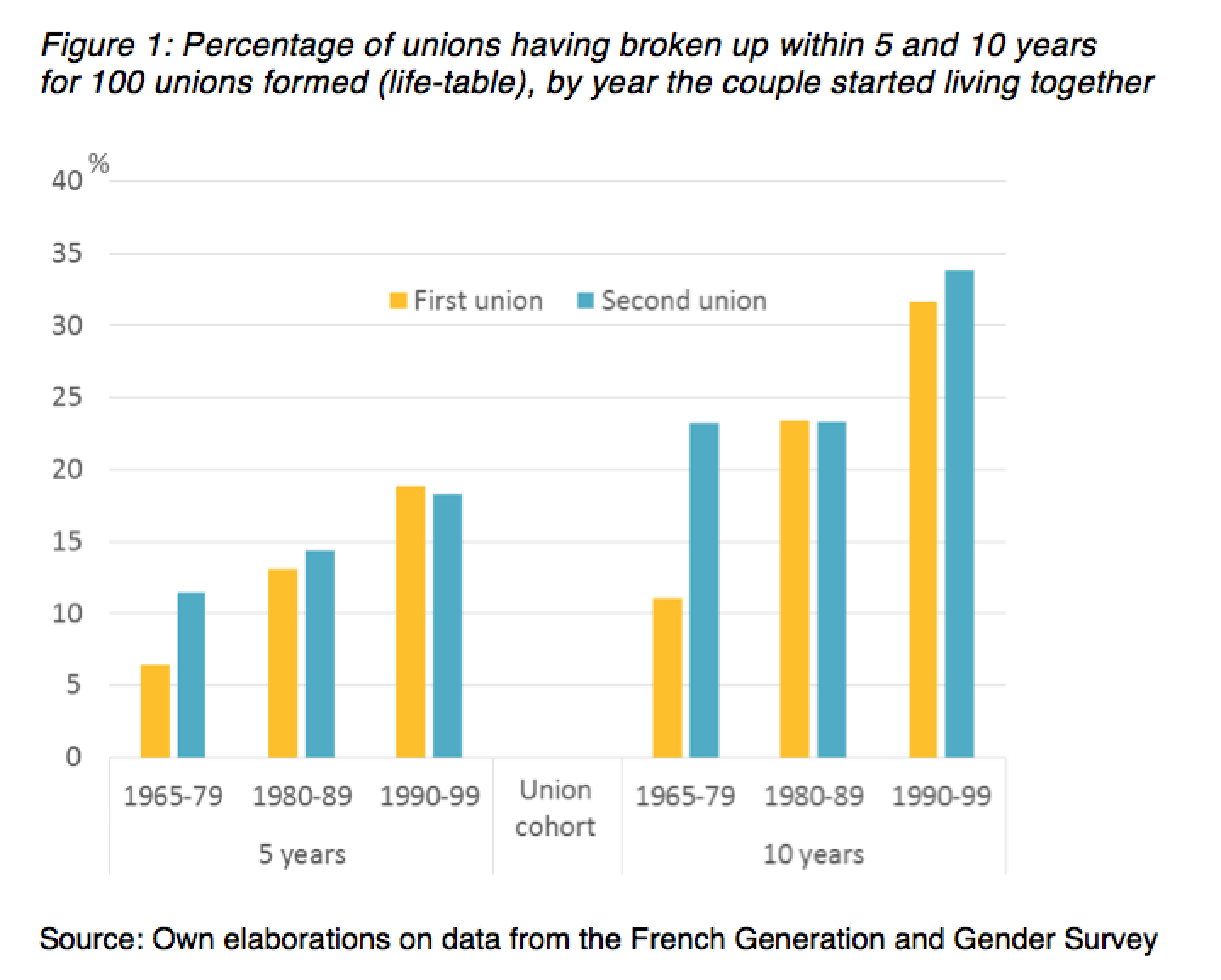In France, second unions now more resilient than first

If at first you don’t succeed …
The first union used to be the one that would last “until death do us part”. The transformation in partnership behaviour emerging in most European countries since the 1960s has coincided with new attitudes and expectations about conjugal life. Partnerships have changed profoundly because: marriage has lost its universal appeal and is no longer considered a milestone marking the passage into adulthood; having children is no longer seen as a necessary part of conjugal life; and both unmarried cohabitation and separation have become widespread, although divorce rates have recently stabilised in some countries, including France, the United Kingdom and the United States (Beaujouan & Ní Bhrolcháin 2011).
I investigated the changes in first and second unions over time, focusing on their stability as well as on their experience of marriage and childbearing (Beaujouan 2016). A union is defined as having lived together with a partner for at least three months, married or unmarried. I based my work on women who were surveyed in the French Generation and Gender Survey (ERFI, INED-INSEE 2005) who formed a union between 1950 and 2005 (4464 women aged 25–79).
First, second … What’s the difference?
The main result is that second and first unions are more similar than they used to be. As first unions are increasingly childless when they break up, women are increasingly entering second unions without step-children: the share of women forming second unions in which neither they nor the partners had previously had children increased gradually from 23 per cent in 1965–79 to 32 per cent in 1990–99. Second unions were also always more often unmarried and childless than first ones. This has not changed, but the contrast has narrowed as first unions have also more often become unmarried and childless. And above all, first unions have become more unstable: their dissolution rates rose far more rapidly than those of second unions, which had initially been higher. As a result, we observe a general convergence in the likelihood of first and second unions breaking up. Only one out of ten (11 per cent) first unions that began in 1965–79 broke up within ten years, whereas almost one-quarter (23 per cent) of second unions beginning in that period broke up. In contrast, around one-third of both first and second unions initiated in the 1990s were dissolved within ten years (Figure 1).
Moreover, if we focus on specific union types such as comparisons of unmarried first and second unions or analyses of first and second unions with shared children, we find that second unions tend to be more stable if other factors are held equal, for example: year of entering union, relative age at union formation, or experiencing parental separation. One of the key factors contributing to the fragility of second unions is the frequent presence of step-children, as partnerships with stepchildren have a much higher likelihood of dissolution than other partnerships.
Overall, the rapid increase in the instability of first unions in France has clearly contributed to first and second unions becoming more similar. At a time when young people spend more years studying and often postpone having their first child until their thirties, they spend more years in relatively informal and childless partnerships, which are also more fluid and unstable (Rault & Régnier-Loilier 2015). Could it therefore be that second unions, which form later in life, are gradually replacing first unions as the more established and stable type of partnership?
References
Beaujouan, É. (2016). Second unions now more stable than first? A comparison of separation risks by union order in France. European Journal of Population – Revue européenne de Démographie, 32, 293–321.
Beaujouan, É., & Ní Bhrolcháin, M. (2011). Cohabitation and marriage in Britain since the 1970s. Population Trends, 145, 35–59.
Rault, W., & Régnier-Loilier, A. (2015). First cohabiting relationships: recent trends in France. Population & Societies, 521.
